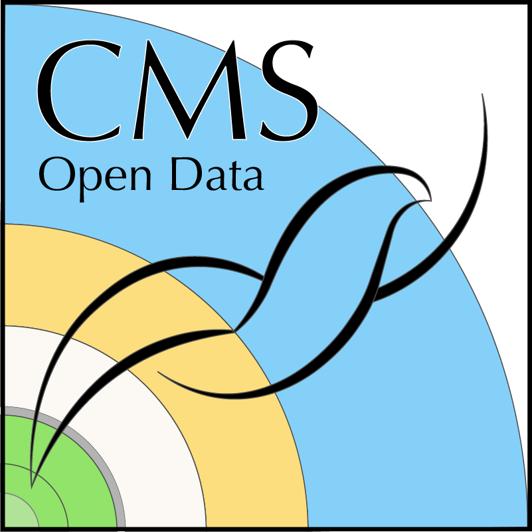Machine Learning Practical Applications
Last updated on 2024-07-19 | Edit this page
Overview
Questions
- How can machine learning be applied to particle physics data?
- What are the steps involved in preparing data for machine learning analysis?
- How do we train and evaluate a machine learning model in this context?
Objectives
- Learn the basics of machine learning and its applications in particle physics.
- Understand the process of preparing data for machine learning.
- Gain practical experience in training and evaluating a machine learning model.
Practical Application of Machine Learning in Particle Physics
Machine learning techniques, such as Convolutional Neural Networks (CNNs) and autoencoders, play pivotal roles in analyzing particle physics data. This section provides insights into their architectures, training processes, and practical applications within the field.
Convolutional Neural Networks (CNNs)
Purpose and Architecture
CNNs are specialized neural networks designed for processing grid-like data, such as images. In particle physics, CNNs are instrumental in tasks requiring image classification, object detection, and image segmentation:
- Purpose: CNNs excel in supervised learning scenarios where labeled data is available for training.
- Architecture: They comprise convolutional layers that extract features hierarchically, pooling layers for spatial dimension reduction, and dense layers for final classification.
- Training: CNNs learn through backpropagation, adjusting weights to minimize classification error or regression loss.
- Applications: In particle physics, CNNs are used to classify particle types, analyze detector images for anomalies, and segment regions of interest in collision data.
Practical Example
This project explores the application of deep learning techniques in
high-energy physics using data from the CMS experiment at the LHC. The
repository includes analyzers, scripts, and notebooks to process
collision data and train convolutional neural networks (CNNs) for
particle classification. By transforming collision data into images and
using various CNN architectures, the project aims to classify
high-energy particle collision outcomes with high accuracy. The
poet_realdata.py script and
MuonAnalyzer_realdata.cc analyzer are based on the original
configuration and analyzers used in the final version of the CMS
Open Data Workshop 2022, ensuring consistency and relevance of the
data analysis techniques and tools employed in this project with those
taught during the workshop.
Link to repo: GitHub
Autoencoders
Purpose and Architecture
Autoencoders are unsupervised learning models that learn efficient data representations without explicit supervision. They are versatile in particle physics for tasks such as dimensionality reduction, anomaly detection, and feature extraction:
- Purpose: Autoencoders are adept at learning from unlabeled data to capture underlying patterns or compress data representations.
- Architecture: They consist of an encoder network to compress input into a latent space and a decoder network to reconstruct the input from this representation.
- Training: Autoencoders minimize reconstruction error during training, optimizing parameters to improve data reconstruction quality.
- Applications: In particle physics, autoencoders are used to denoise detector data, detect rare events or anomalies in experimental data, and extract meaningful features for subsequent analysis.
Practical Example
The QCD School 2024 ML project is an educational initiative designed to introduce participants to the application of machine learning in high energy physics, specifically through anomaly detection using unsupervised learning. The project provides a hands-on tutorial for designing and implementing a tiny autoencoder (AE) model, which is trained to identify potentially new physics events from proton collision data obtained from the CMS Open Data. In this example you will learn to compress and decompress data using the autoencoder, train it on background data, and evaluate its performance on both background and New Physics simulated samples. The project also covers advanced techniques like quantization-aware training using QKeras and model deployment on FPGA firmware with hls4ml, providing a comprehensive learning experience that bridges theoretical concepts with practical implementation.
Link to repo: GitHub
Key Differences
- Supervised vs. Unsupervised: CNNs require labeled data for training (supervised), while autoencoders learn from unlabeled data (unsupervised).
- Output: CNNs produce predictions based on input data labels (classification/regression), whereas autoencoders reconstruct input data or learn compressed representations.
- Use Cases: CNNs are suitable for tasks requiring precise classification or segmentation in structured data like detector images. Autoencoders excel in exploratory tasks, anomaly detection, and dimensionality reduction in complex datasets.
Practical Considerations
Understanding these machine learning techniques equips researchers with powerful tools to analyze CMS Open Data effectively. By mastering CNNs and autoencoders, participants can enhance their ability to derive insights, classify particles, and uncover new physics phenomena from particle collision data.
Key Points
- Supervised vs. Unsupervised: CNNs require labeled data for training, making them suited for supervised learning tasks where the model learns from explicit examples with known outcomes. Autoencoders, in contrast, utilize unlabeled data and excel in unsupervised learning, focusing on learning data representations and detecting anomalies without predefined labels.
- Output: CNNs produce predictions or classifications based on input data labels (classification/regression), whereas autoencoders aim to reconstruct input data or generate compressed representations for further analysis.
- Use Cases: CNNs are ideal for tasks involving structured data such as detector images, where precise classification or segmentation is needed. Autoencoders are particularly useful for exploratory tasks, anomaly detection, and dimensionality reduction in complex datasets where direct supervision is not available.
